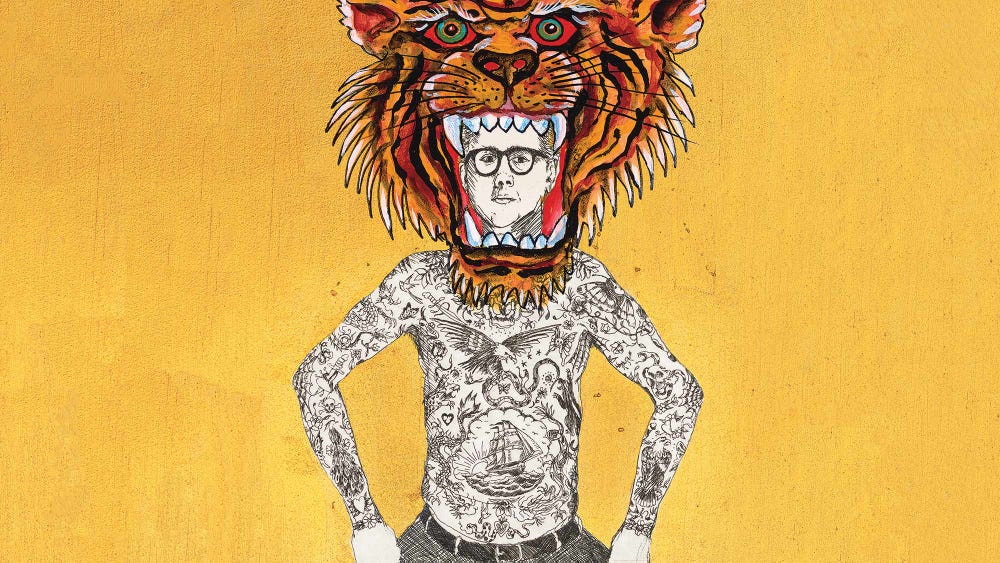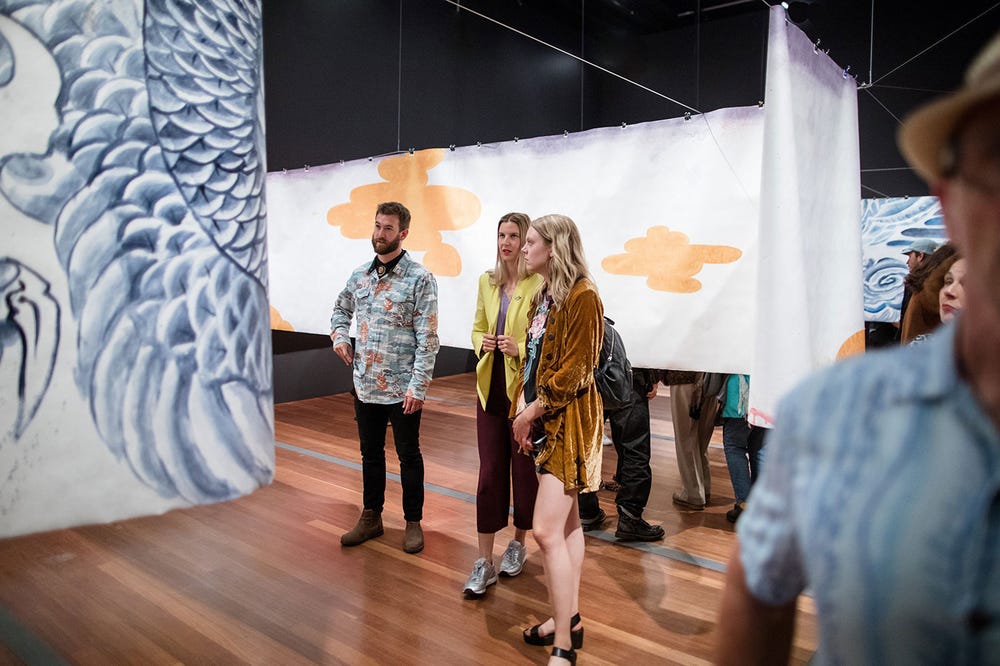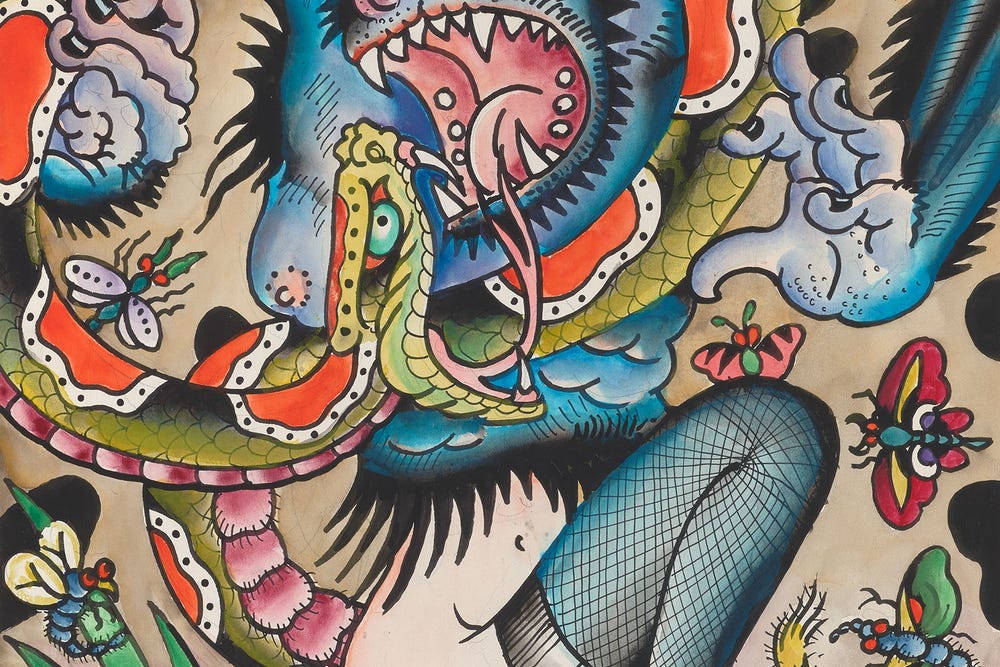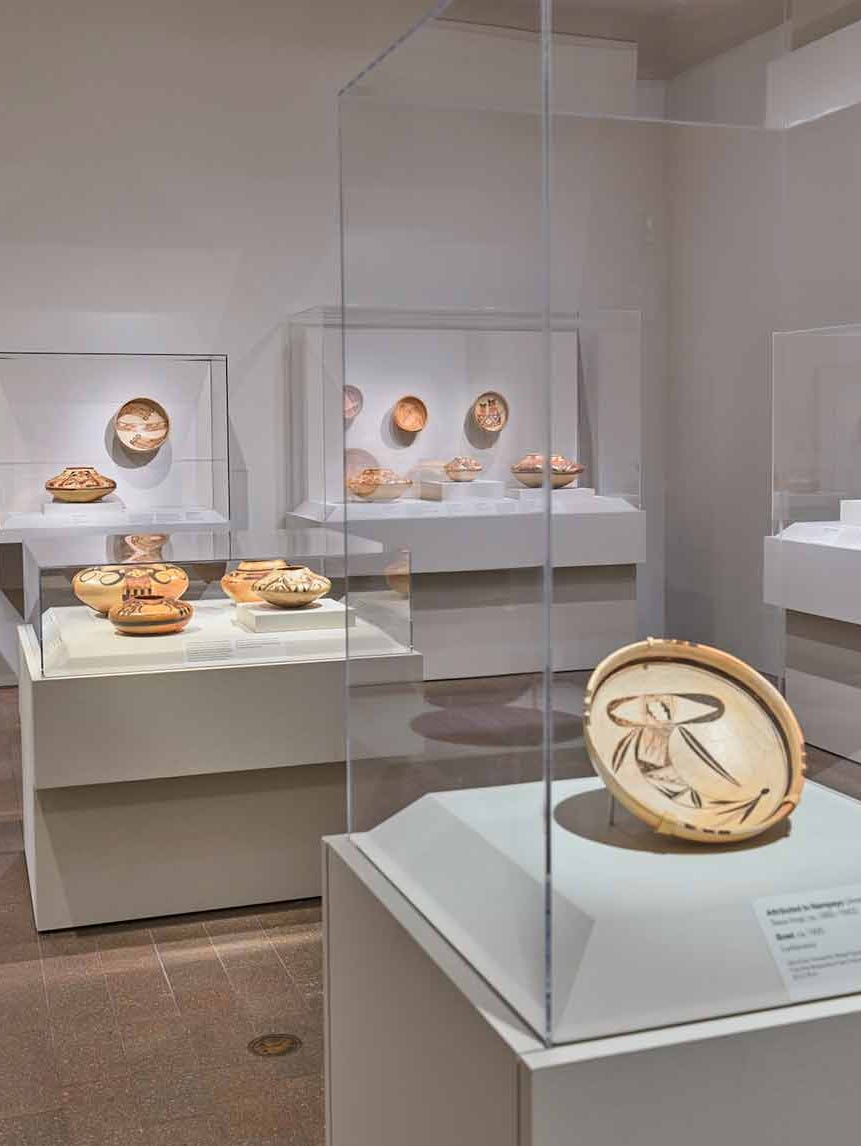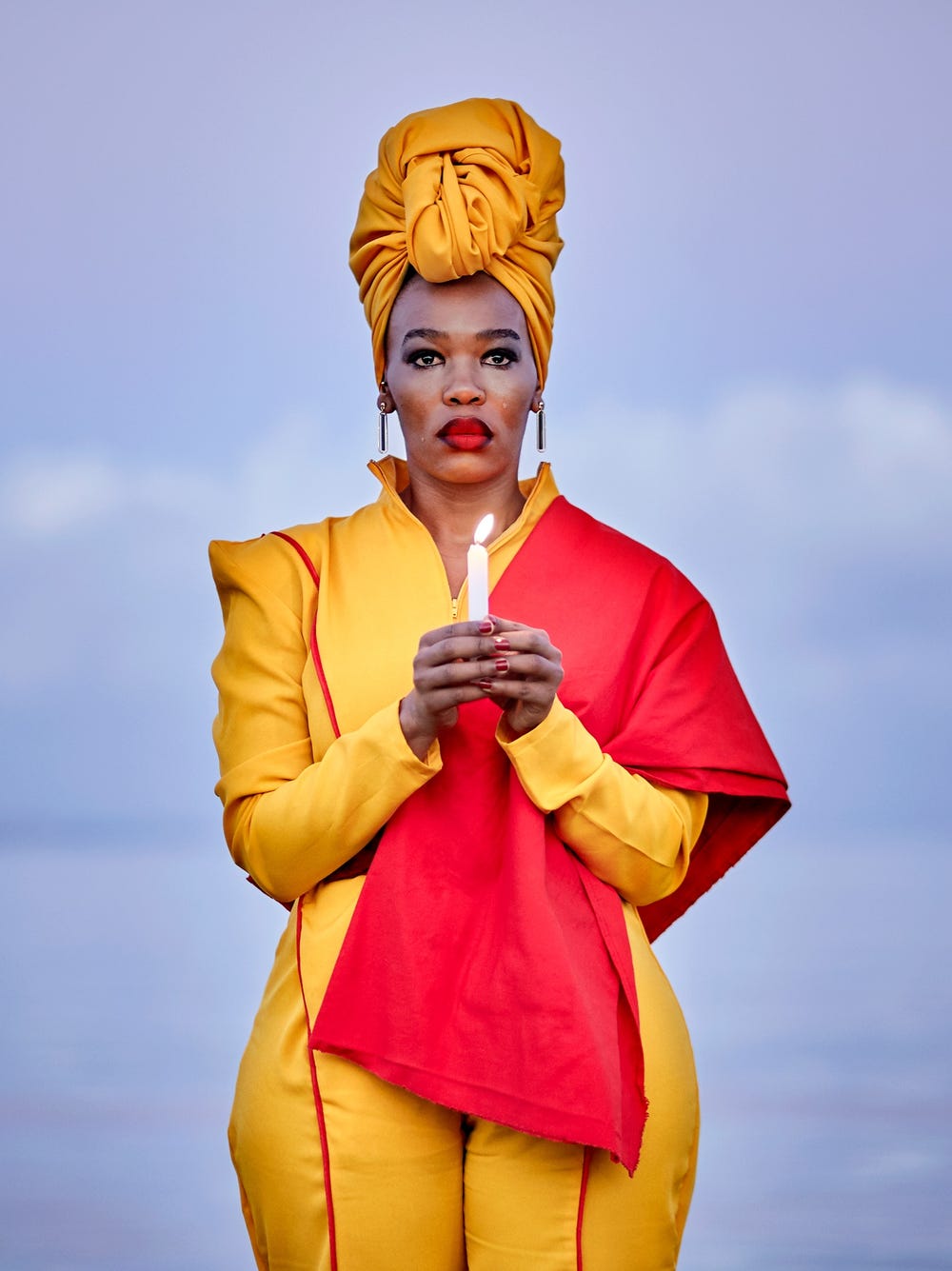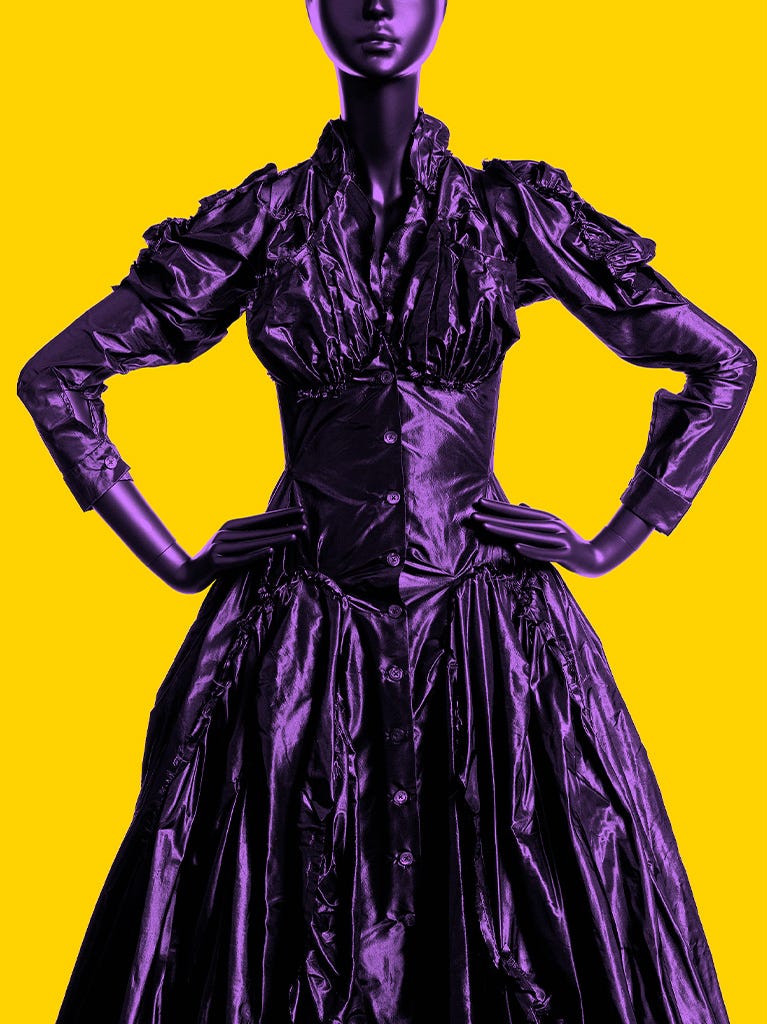Don Ed Hardy, El Tigre, 2009. Acrylic on digital print, 16 x 13 1/8 in. (40.6 x 33.3 cm). Collection of the artist. © 2019 Don Ed Hardy
Ed Hardy: Deeper than Skin
Jump to
The first museum retrospective of renowned tattoo artist and California native Ed Hardy tracks his goal of elevating the tattoo from its subculture status to an important visual art form. The exhibition surveys Hardy’s life in art that has as its inspiration both traditional American tattooing and Japan’s ukiyo-e era culture.
In depth
Deeper than Skin will feature paintings, drawings, prints and three-dimensional works by famed tattoo artist Ed Hardy in a retrospective format that begins with a selection of drawings from the 1950s, when the young artist became fixated on the art of tattooing. Photographs and sketched tattoo designs by the ten-year-old Hardy will be on view, all of them taken at or inspired by the tattoo parlors of the Long Beach Pike, an amusement zone not far from his Corona del Mar home. When Hardy was a teenager, his interest turned from tattooing to creating imagery inspired by the Southern California hot-rod, custom-car, and surf cultures. In high school, an influential teacher directed him to investigate contemporary art and literature, including Pop Art and Beat poetry. Hardy made trips to visit Los Angeles galleries, including the now-legendary Ferus Gallery, where he saw the work of Andy Warhol, Bruce Conner, John Altoon, and Philip Guston. Hardy’s drawings and collages from this period show their influence and will be exhibited alongside works that have what Hardy describes as “strident humanist bent.”
Ed Hardy’s formative years
In the mid-1960s, he attended the San Francisco Art Institute (SFAI), where he studied with Gordon Cook, who became an important mentor. At Cook’s urging, Hardy visited the Achenbach Foundation for Graphic Arts at the Legion of Honor on numerous occasions where then-curator Gunter Troche introduced him to the prints of Dürer, Rembrandt, and Goya, among others. Viewing old master prints and studying print history had a profound effect on his work, and Hardy’s prints from this period show their direct influence.
Hardy graduated from SFAI in 1967 with a degree in printmaking. His specialization in intaglio printmaking, with its “speed of line, rhythm, variety, and density of structure” prepared him well for the career that followed. He turned down a graduate fellowship offer from Yale University and decided instead to begin tattooing professionally. (In keeping with the times, he explains that he considered fine art as elitist, and tattooing as a “forgotten American folk art” with potential for a revival.) Hardy’s goal was to expand the expressive potential of the medium and introduce it to audiences beyond its marginalized status and insular subculture.
Hardy experienced a long learning curve in the course of working at tattoo studios in Vancouver, British Columbia, Seattle, and Honolulu as he attempted to develop technical expertise and hone a personal style. An impressive selection of his tattoo “flash” (sample tattoo designs) from those years (1967 – 1971) will show his versions of standard “old school” tattoos as well as designs that melded Western imagery with the Japanese subject matter that he’d been introduced to by Sailor Jerry, a mentor tattooist in Honolulu . Hardy also studied with a Japanese master tattooist in 1972 in Gifu, Japan, and several preparatory drawings for tattoos developed there will be shown.
From student to artist
In 1974 Hardy opened Realistic Tattoo in San Francisco, a private studio where he undertook unique tattoo commissions tailored to his clients’ wishes and needs. A large selection of preparatory drawings developed for private clients will be shown, including back and chest pieces and full-body tattoos. By 1980 he had built an international reputation, and in 1986 decided to take a break from tattooing and return to drawing and painting in Honolulu, where he had moved. Hardy discovered then that he could utilize imagery that he had developed as a tattoo artist in compositions that were large and complex. Brushes and pens on paper and canvas presented a challenging departure from tightly controlled tattoo work. The process was nevertheless liberating, and during this time Hardy created a large body of work and exhibited frequently at galleries in San Francisco and Los Angeles.
Hardy returned to printmaking in 1992, and early etchings created at presses in Chicago and San Francisco reveal a simple style akin to the “flash” in his tattoo repertoire. Later prints — particularly those done with Mullowney Printing (Nara, Japan, and San Francisco), Shark’s Ink (Boulder, Colorado), and Magnolia Editions (Oakland) — are larger, colorful, and more ebullient. Hardy describes them as a mix of “the grotesque, humorous, subtle, and flamboyant.” A large group, representative of this period and selected from Hardy’s 2017 gift to the Fine Arts Museums, will be included in the exhibition.
To honor the millennial year 2000, which was also the Year of the Dragon in the Chinese zodiac, Hardy completed a 500-foot-long scroll painting that includes images of 2,000 dragons. This exuberant, celebratory painting will be shown in its entirety in the exhibition.
In 2003, several of Hardy’s tattoo designs formed the basis of the namesake global fashion line that became an international phenomenon. The licensing of his brand afforded Hardy the financial freedom to retreat from active tattooing and spend more time creating art in various media. In 2007, he created hand-painted porcelain in traditional Japanese forms as well as a series of unique wall-hung porcelains that he calls Ghosts. A selection will be included in the exhibition alongside Eyecons, a series of resin-coated paintings on panels, disks, and “boogie boards” that he created at Trillium Graphics (Brisbane, CA) in 2008. Rose, a jacquard tapestry (Magnolia Editions) from 2015, and recent paintings and drawings bring the exhibition up to date.
In the news
Film
The de Young hosted a colorful opening night for Ed Hardy: Deeper Than Skin. Visitors shared their first reactions, delight and excitement for the exhibition that celebrates the tattoo pioneer.
Gallery
Sponsors
This exhibition is organized by the Fine Arts Museums of San Francisco. Major Support is provided by The Herbst Foundation, Inc.
